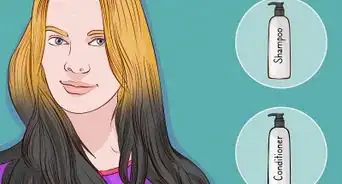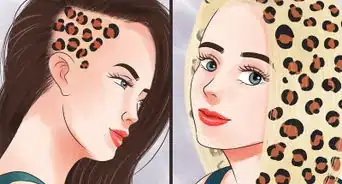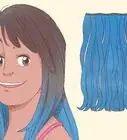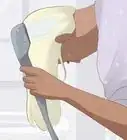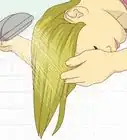This article was co-authored by Bianca Cox. Bianca Cox is a Hair Stylist, Licensed Cosmetologist, Owner of The Hair Throne, and Co-Owner of Bianchi Salon. Her salons pride themselves on their modernity, individuality, art, and professional services. You can check out The Hair Throne and more of Bianca's hairstyling on Instagram @hairthrone and on her personal Instagram @biancajcox.
There are 7 references cited in this article, which can be found at the bottom of the page.
wikiHow marks an article as reader-approved once it receives enough positive feedback. This article received 27 testimonials and 85% of readers who voted found it helpful, earning it our reader-approved status.
This article has been viewed 2,547,043 times.
Ombre hair is a coloring effect in which the bottom portion of your hair looks lighter than the top portion. To achieve this effect, it is necessary to bleach the lower portion of your hair. If you want to prevent a brassy or orangey color, you can also dye the bottom part of your hair after you have bleached it. This extra step is not required, but it helps to even out the tone of your ombre. Keep reading to learn how to get ombre hair.
Steps
Getting Started
-
1Select your color. Therefore, you should choose a color that works well with your natural color. The usual options are a lighter shade of brown, a shade of red/auburn, or a shade of blonde.[1]
- There are two types of ombre: traditional, and reverse. The traditional ombre has a lighter color at the tips of your hair than at the roots, while a reverse ombre has darker tips and lighter roots.
- Select a shade that is no more than two shades lighter than your existing hair color.
- The more subtle the color change, the more natural and sun-kissed your hair will appear.
- Whenever possible, look for mild or all-natural dyes that will be less damaging to your hair.
-
2Decide where you want the fade to stop. Equally important as the color selection is choosing where your natural color and dyed color will meet. The lower down your hair the two meet, the safer your look will be. If the two colors meet too high, you run the risk of looking like you have grown-out roots, rather than a beautiful ombre.[2]
- Ombre hair is more suitable for those with longer hair, as this makes you less likely to look like you have grown-out roots. The longer the hair, the further down the ombre can begin to work its contrast.
- In general, the jawline is a good place to have the two tones meet.
Advertisement -
3Brush your hair well. Make sure that there are no tangles left in your hair. This step will make applying the bleach easier, but it will also help you to make sure that your hair will be evenly colored.[3]
-
4Put on a smock or an old t-shirt. There is a good chance that you will get bleach or dye onto your clothes during the process. An artist or styling smock should help prevent this, though. If you do not have a smock to throw on, change into an old t-shirt that you can get dirty.
-
5Put on gloves. Gloves generally come with a dye kit but if they don’t, you can simply use normal rubber, vinyl, or latex gloves. Remember that it is very important to wear gloves when dyeing or bleaching your hair.
- If you do not use gloves, you can end up dyeing or bleaching your hands in addition to your hair. The bleach can also irritate your skin, causing a burning sensation.
Bleaching Your Hair
-
1Mix your bleach. Unless you are doing a reverse ombre, you will need to use bleach to lift the color from your hair. There is the option of using blonde hair dye - which is safer on your strands - but it doesn’t lift as much color so your end-result will be much more subtle.
- Developer comes in 10, 20, 30, and 40 volumes. However, you should not need 30 or 40 volumes to achieve an ombre look.
- The easiest and cheapest at home bleach method is to use equal parts of 20 volume peroxide and powdered bleach. Mix 2oz each of the 20 volume peroxide and powder until they are completely combined into a creamy mixture.
- Always mix the bleach in a well-ventilated area to avoid inhaling too much of the fumes.
-
2Divide your hair into sections. Part your hair down the middle so that it is split half-and-half. Then, divide both halves into as many sections as you want.[4] At the very least, you should divide each half into half again, splitting your hair into quarters.[5]
- If your hair is long and/or thick, you may want to divide it into more sections.
- Pin or tie each section off to separate it from the rest. If using clips, always be sure they are non-metallic – metals can react with the chemicals you’re using on your hair.
- Tease up the hair around the area where you want the ombre to begin. Teasing your hair around this area will help prevent a stark line or line of demarcation where you applied the bleach.
-
3Choose an application tool. If you’re using a dye or bleach kit, chances are you were provided with a small brush to apply the bleach. If not, the best option is to use an applicator brush. You can find these are your local beauty supply store.
- Alternatively, a similar soft, small brush will work well for application. Just make sure that you use a brush that you would be okay with tossing out after you are done.
-
4Begin bleaching your hair. Add bleach starting at the ends and working your way up to the desired fade line. Don’t feel like you need to work fast or to work in large sections; work in such a way that you get all the strands evenly coated with the lightening product.
- Make sure that you apply the bleach evenly to both sides of your hair. Check in the mirror to make sure that the bleach starts at about the same spot on both sides.[6]
- Make sure that you coat all of the hair that you want to bleach. Inspect your strands to check for any spots you may have missed – even saturation is key.
- To avoid a stark line or line of demarcation, apply the bleach using an applicator brush and take vertical strokes down the hair strand, rather than painting the hair in a horizontal motion.[7]
-
5Let the bleach set. Depending on how light you want your hair to be, you will need to let the bleach set for anywhere from 10-45 minutes. To check, remove the bleach from a small strand of your hair after about 10-20 minutes. If you like the shade, remove the rest of the bleach. If you want to go lighter, leave it in and check again in 5-10 minutes.
- For a slight change in color, leave the bleach in for only 10-20 minutes.
- For a more bold change in color, leave the bleach for 40-45 minutes. Leaving the bleach in for longer will also help prevent orange or brassy tones.[8]
-
6Wash out the bleach. Keeping your gloves on, rinse out the bleach with warm water. Then, wash your hair with a sulfate-free shampoo. Be sure to get out all the bleach, or your hair will continue to lighten. Don’t condition your hair just yet.
Coloring Your Hair
-
1Make sure your hair is dry. Use a towel to dry it off before beginning the coloring process. You may even want to wait for an hour or two to allow your hair to get mostly dry.
-
2Section off your hair once more. Divide your hair into its original sections. Tie off the ends with elastic bands or hair clips to make your dying job a bit easier. Use at least 2-3 sections, or as many more as you need to feel comfortable.
- Again, use non-metallic clips to avoid reactions with the dying chemicals.
-
3Put on gloves. Gloves generally come with a dye kit but if they don’t, you can simply use normal rubber, vinyl, or latex gloves. Remember that it is very important to wear gloves when dyeing or bleaching your hair. If you do not, you will end up dyeing or bleaching your hands as well.
-
4Prepare your color. Most box hair dyes require a bit of measuring and mixing, so follow the instructions and prepare your dye. Make sure that you mix your dye in a well ventilated area.
-
5Brush in your color. Follow the application instructions that came with your hair dye to properly add it to your hair.
- If you’re dying your hair with a traditional ombre (lighter ends), then apply the hair dye to all the bleached sections of hair and just a bit further up your strands as well.
- If you’re doing a reverse ombre, add the color just up to the color fade line, and then a second heavier coat near the tips (similar to the bleach application).
- Make sure that you coat all of the hair that you want to dye. Inspect your strands to check for any spots you may have missed. As with bleach, even saturation with dye is very important.
-
6Let the color set. Follow the box instructions to be determine how long you should leave the dye in your hair. Wait the recommended amount of time for your hair dye to set. Since your hair has been bleached, you probably won’t need to leave the dye in for more than ten minutes.
-
7Wash out the hair color. Keeping your gloves on, rinse out the dye with warm water. Then, wash your hair with a sulfate-free shampoo. Bleaching/coloring your hair can be very damaging, so take the time to use a deep conditioner to help add some moisture back into your locks.
-
8Dry and style your hair as usual. With your hair being a tad fried from the chemical dye, it may be best to allow it to air-dry and avoid any hot tools. However, if you’re like most of us you’ll want to blow dry your hair right away and get it looking back to normal. Doing this also allows you to determine if you’ve gotten the color you want, or if you need to do some touching up post-dye.
Expert Q&A
-
QuestionHow do you paint ombre?
 Ashley AdamsAshley Adams is a Licensed Cosmetologist and Hair Stylist in Illinois. She completed her Cosmetology education at John Amico School of Hair Design in 2016.
Ashley AdamsAshley Adams is a Licensed Cosmetologist and Hair Stylist in Illinois. She completed her Cosmetology education at John Amico School of Hair Design in 2016.
Professional Hair Stylist Ombré is usually used when you want your hair lighter at the ends. Determine where you want your ombré to begin on your hair. Bleach your ends first if needed. If not, mix the dye according to the packaging instructions and paint it onto the ends of your hair.
Ombré is usually used when you want your hair lighter at the ends. Determine where you want your ombré to begin on your hair. Bleach your ends first if needed. If not, mix the dye according to the packaging instructions and paint it onto the ends of your hair. -
QuestionHow much does it cost to get an ombre?
 Ashley AdamsAshley Adams is a Licensed Cosmetologist and Hair Stylist in Illinois. She completed her Cosmetology education at John Amico School of Hair Design in 2016.
Ashley AdamsAshley Adams is a Licensed Cosmetologist and Hair Stylist in Illinois. She completed her Cosmetology education at John Amico School of Hair Design in 2016.
Professional Hair Stylist Pricing varies by location according to where you live. The average price of ombre at a salon is approximately $100.
Pricing varies by location according to where you live. The average price of ombre at a salon is approximately $100. -
QuestionWhat is the Balayage technique?
 Ashley AdamsAshley Adams is a Licensed Cosmetologist and Hair Stylist in Illinois. She completed her Cosmetology education at John Amico School of Hair Design in 2016.
Ashley AdamsAshley Adams is a Licensed Cosmetologist and Hair Stylist in Illinois. She completed her Cosmetology education at John Amico School of Hair Design in 2016.
Professional Hair Stylist When using the balayage technique, hair dye is painted onto the hair in a way that makes the finished product look very natural. The dye is applied from the midstrand to the ends of the hair in a freehand manner.
When using the balayage technique, hair dye is painted onto the hair in a way that makes the finished product look very natural. The dye is applied from the midstrand to the ends of the hair in a freehand manner.
Warnings
- Do not use household bleach. Use a bleach that is designed for hair and says "Hair Bleach" on the package.⧼thumbs_response⧽
- If you hair is badly damaged, reconsider coloring your hair. The lightener or color will increase the damage.⧼thumbs_response⧽
Things You’ll Need
- Hair elastics
- Hair color or lightening kit
- Smock or old t-shirt
- Disposable plastic gloves
- Comb
- Brush
- Shampoo
- Conditioner
References
- ↑ http://www.latest-hairstyles.com/color/ombre/lovely-ideas.html
- ↑ http://www.refinery29.com/ombre#slide-1
- ↑ http://fashionista.com/2013/01/a-step-by-step-guide-to-getting-ombre-hair-at-home-from-loreals-top-colorist#2
- ↑ Bianca Cox. Professional Hair Stylist. Expert Interview. 9 May 2019.
- ↑ http://beautyhigh.com/how-to-diy-ombre-hair/
- ↑ http://beautyhigh.com/how-to-diy-ombre-hair/
- ↑ Bianca Cox. Professional Hair Stylist. Expert Interview. 9 May 2019.
- ↑ http://fashionista.com/2013/01/a-step-by-step-guide-to-getting-ombre-hair-at-home-from-loreals-top-colorist/2/
About This Article
To ombre your hair, start by dividing it into smaller sections with hair ties, which will make it easier to dye. Move the hair tie in each section up so it pinches your hair right where you want the fade to start. Then, apply bleach to your hair, starting at the ends and working your way up to the hair tie in each section. Leave the bleach in your hair for 10-45 minutes, depending on how light you want to go. Finally, rinse the bleach out of your hair once you're satisfied with how light it is. To learn how to dye the ends of your hair after you ombre it, scroll down!
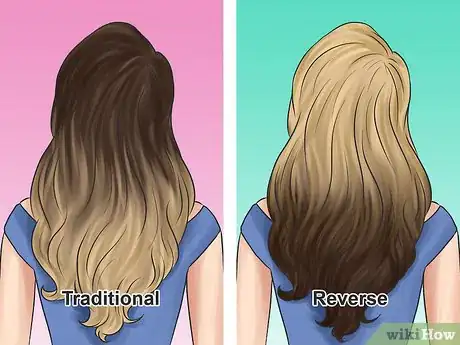
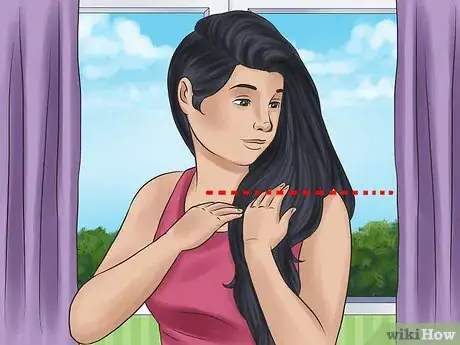
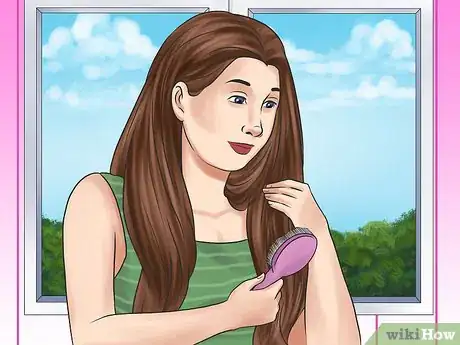
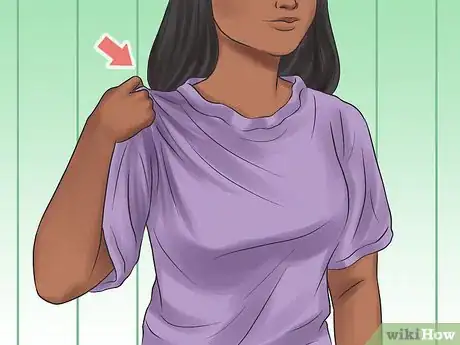
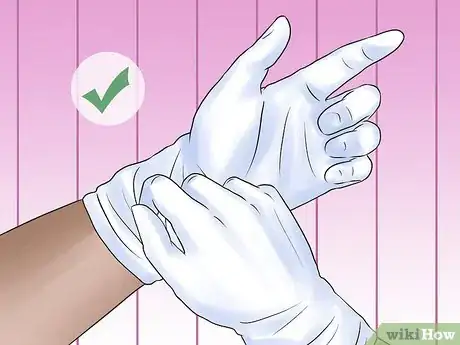
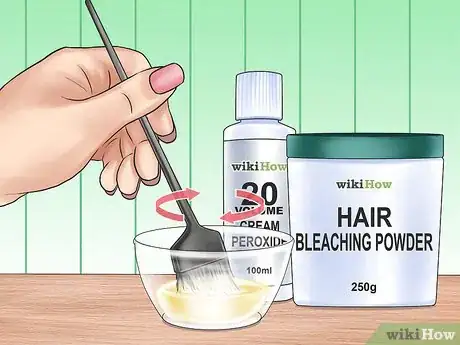
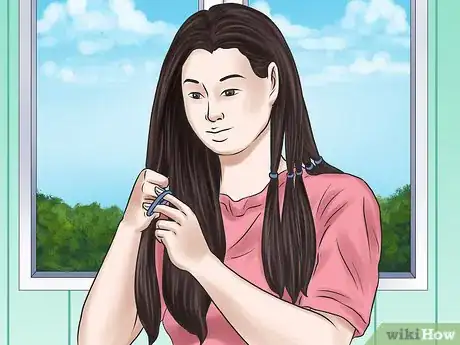

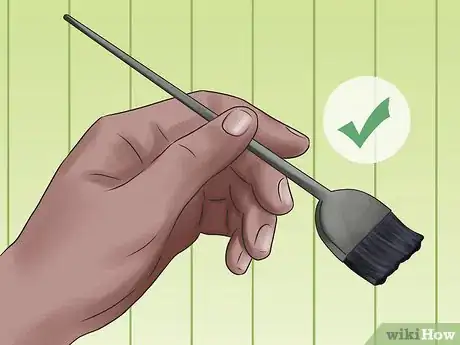
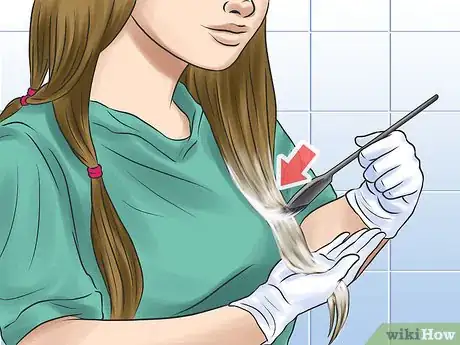
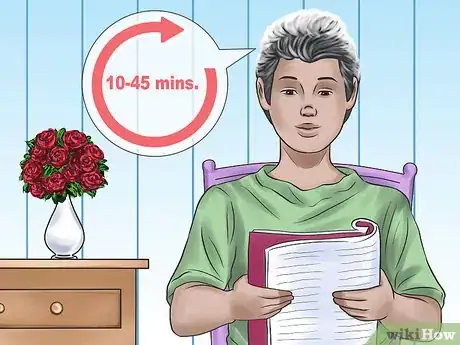
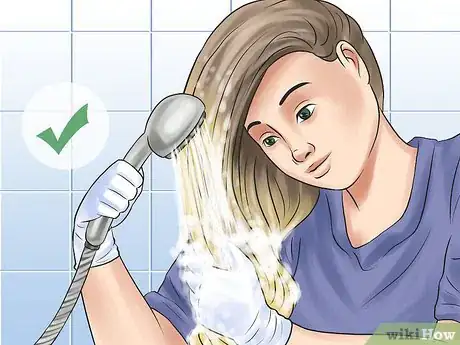
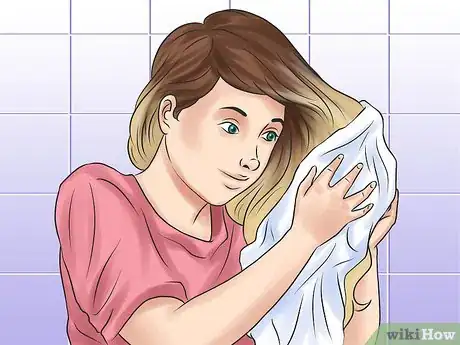
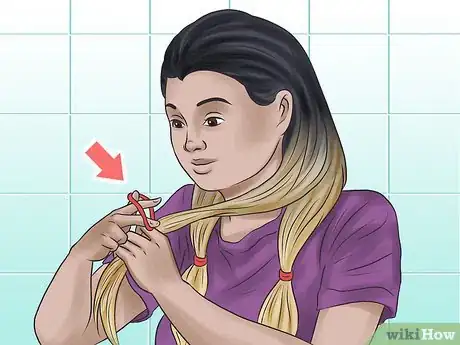
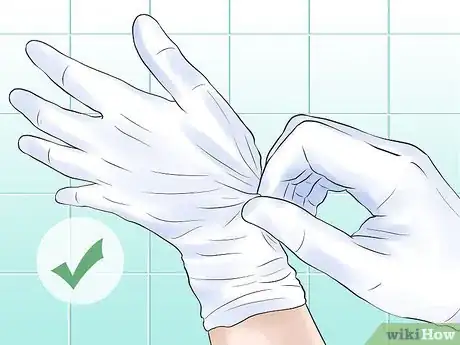
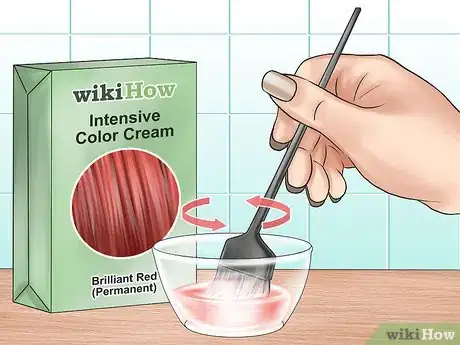
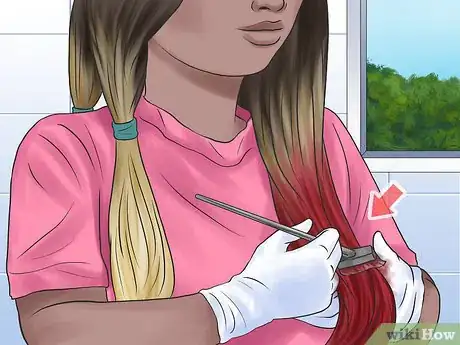
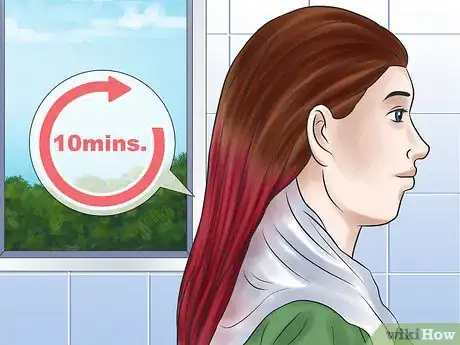
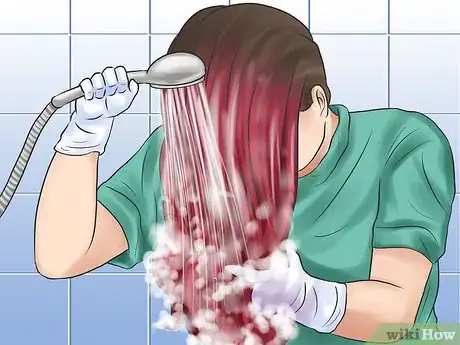
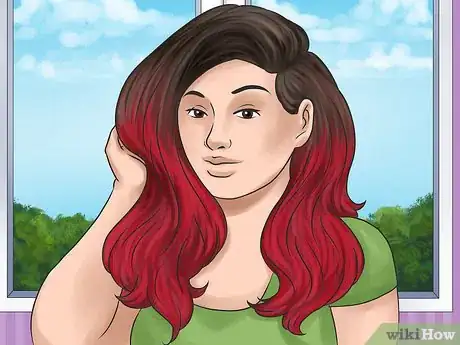
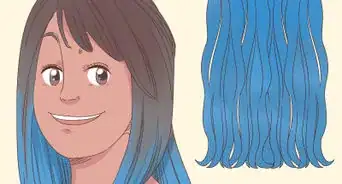
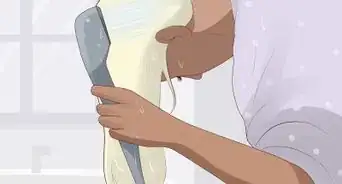

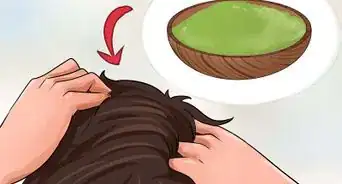
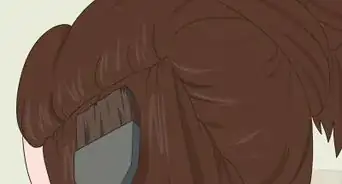
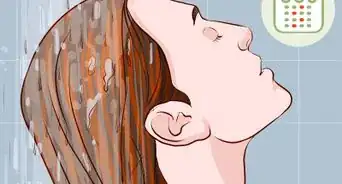
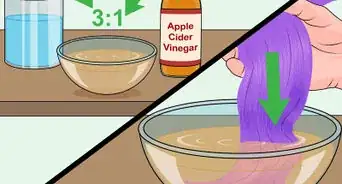
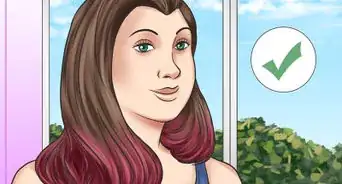
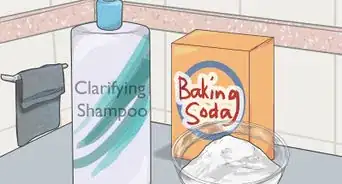
-Hair-at-Home-Step-16-Version-5.webp)
